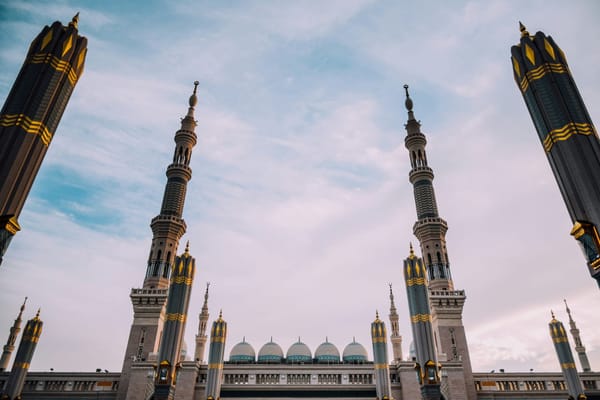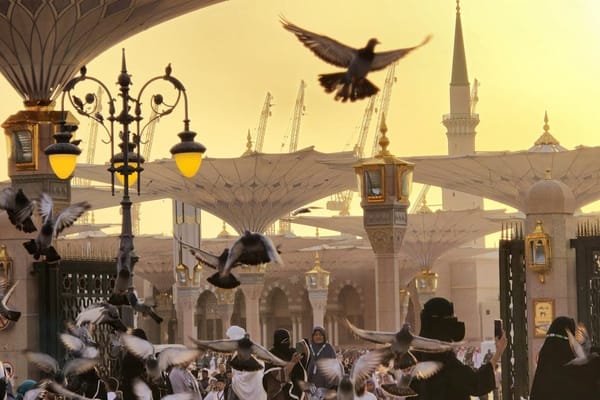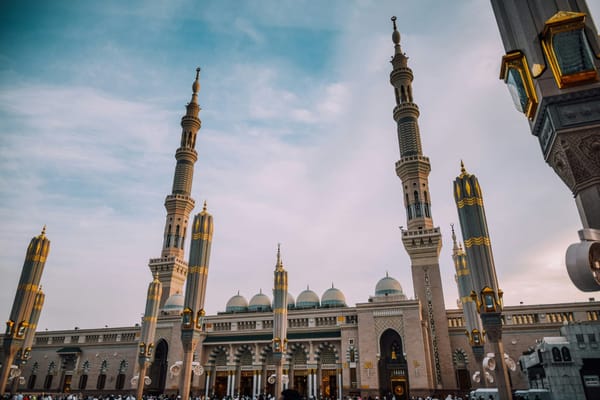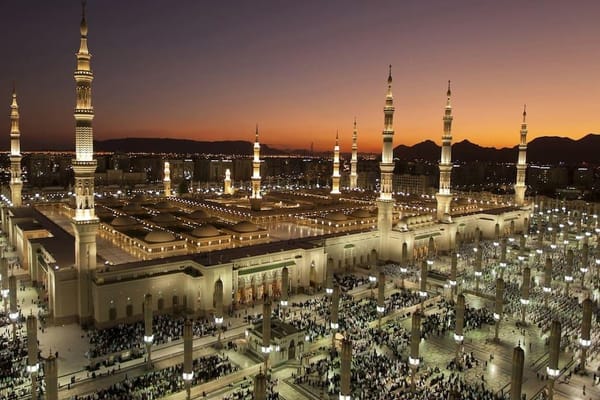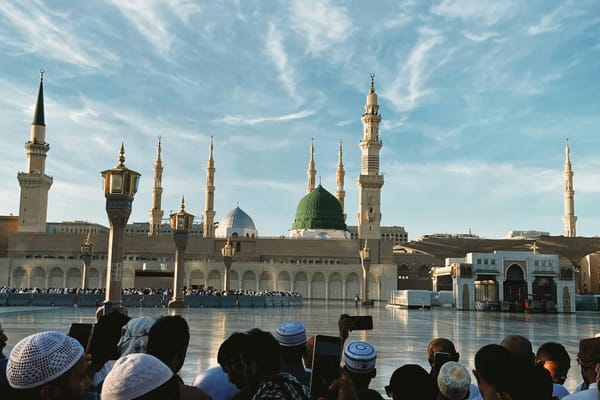Masjid-e-Nabawi, also known as the Prophet's Mosque or Masjid un Nabawi, is one of the most revered sites in Islam and a cornerstone of Madinah's spiritual and cultural identity. Founded by the Prophet Muhammad (ﷺ) himself in 622 CE, this sacred mosque has witnessed centuries of expansion, architectural innovation, and religious devotion. From its humble beginnings to its modern grandeur, the journey of al Nabawi mosque is a mirror of Islamic history itself.
This timeline traces the key milestones in the development of Masjid-e-Nabawi and includes fascinating details such as the purpose of the iconic green dome and how to explore the mosque today with services like the Madinah Hop-On Hop-Off Bus.
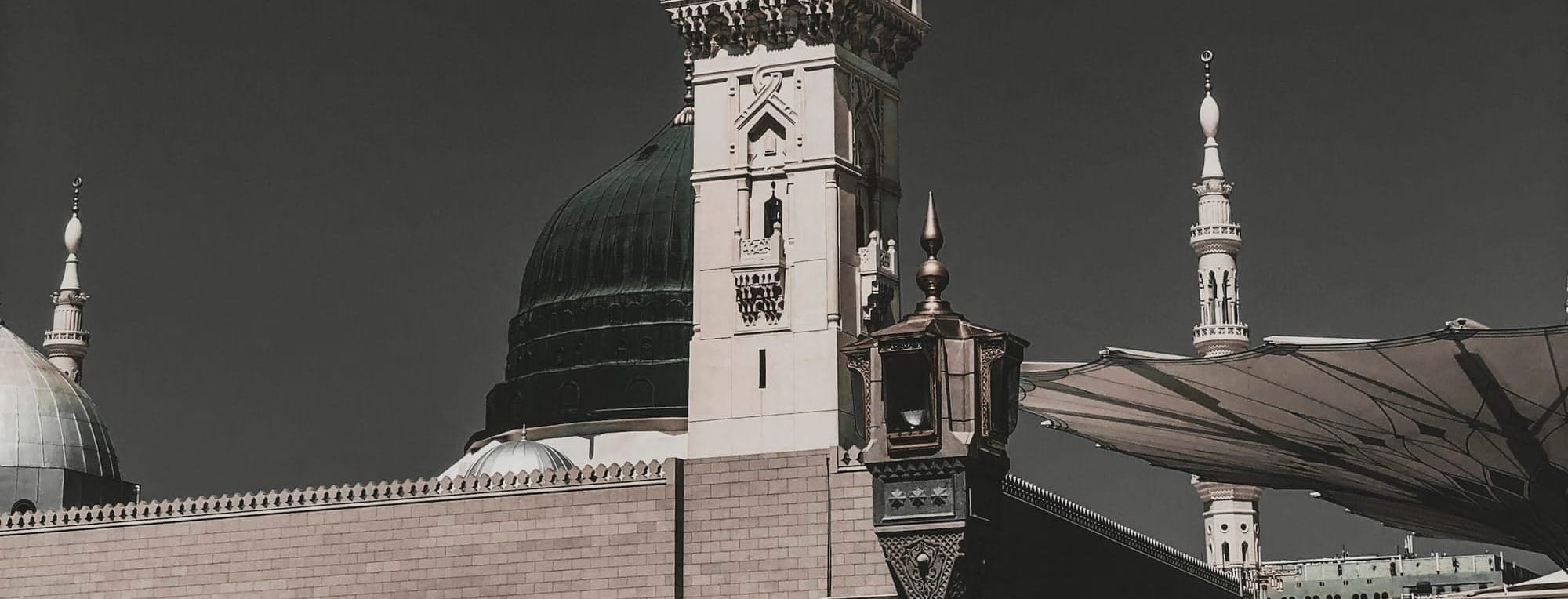
Foundation by the Prophet (ﷺ)
(622 CE)
Shortly after migrating from Makkah to Madinah, Prophet Muhammad (ﷺ) selected a plot of land belonging to two orphan brothers, Sahl and Suhayl. With their permission, and compensation arranged, construction began with the Prophet himself laying bricks.
- The original masjid was an open-air structure.
- Built with palm trunk columns and a thatched roof made of palm leaves.
- The Prophet's house was adjacent, underscoring the masjid's centrality to daily life.
This was not only a place of worship but a center for learning, justice, and community gatherings.

Early Expansions
Caliph Umar ibn al-Khattab (638 CE)
The first major expansion occurred under Umar ibn al-Khattab, who increased the size of the masjid to accommodate the growing Muslim population.
- Extended the prayer area
- Added a shaded section
Caliph Uthman ibn Affan (649-650 CE)
Caliph Uthman further reconstructed the mosque:
- Replaced palm trunks with stone columns
- Introduced better quality materials for durability
While the Green Dome is the most iconic feature of Masjid al Nabawi, there's also a smaller silver-colored dome next to it that often draws curiosity. This silver dome is situated above the Mihrab Uthmani—the prayer niche installed during the caliphate of Uthman ibn Affan (RA)—and is considered the current functional dome of the mosque.
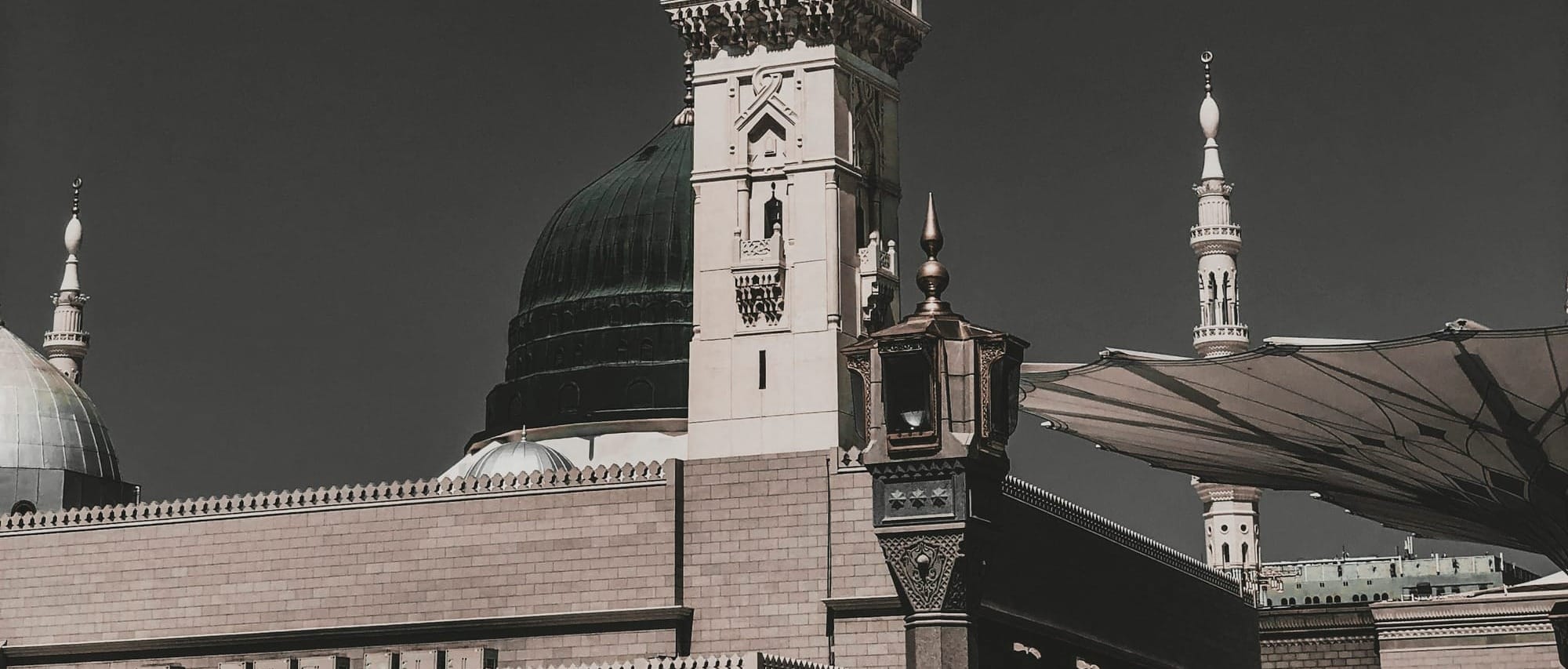
Umayyad & Abbasid Periods
Umayyad Caliph al-Walid I (705-715 CE)
This era saw substantial architectural enhancements:
Introduction of the first minarets
- Construction of the mihrab (prayer niche)
- Inclusion of the Prophet's tomb within the masjid walls
Abbasid Caliph al-Mahdi (775-785 CE)
- Further extensions were made
- Decorative motifs and artistic elements were introduced
- Emphasis on both function and beauty

Mamluk & Ottoman Contributions
Sultan Qaitbay (1481 CE)
The Mamluks added a notable feature:
- A wooden dome built over the Prophet’s tomb
- Later covered with lead for protection
Sultan Mahmud II & The Green Dome (1818 CE)
The Ottomans left an enduring mark:
- The dome was rebuilt in brick and painted green in 1837
- Today, it is known globally as the Green Dome, a signature visual of Masjid Nabawi
Under the Green Dome of Masjid al Nabawi are the graves of Prophet Muhammad (ﷺ), Abu Bakr al-Siddiq (RA), and Umar ibn al-Khattab (RA). They are buried in what was once the room of Aisha (RA), the Prophet’s wife.

The Saudi Era: Modern Expansion
King Abdulaziz (1951–1956)
- Initiated modern expansions with the use of reinforced concrete
- Purchased surrounding land to enlarge the mosque footprint
King Fahd (1985–1994)
- Major transformation increasing capacity to over a million worshippers
- Introduction of escalators, air conditioning, and underground facilities
King Abdullah (2012 Onwards)
- Latest expansions focus on smart infrastructure, accessibility, and sustainable energy
- Enhanced accommodation for pilgrims during Hajj and Umrah seasons
- Installed retractable umbrellas in the mosque courtyards to provide shade and comfort
The Umbrella Installation at Masjid al Nabawi
One of the most striking features of Masjid al Nabawi today is the impressive array of giant retractable umbrellas installed in the mosque’s courtyards. These umbrellas serve both aesthetic and functional purposes—providing shade to thousands of worshippers and reducing heat in the outdoor prayer areas during the intense Madinah summers.
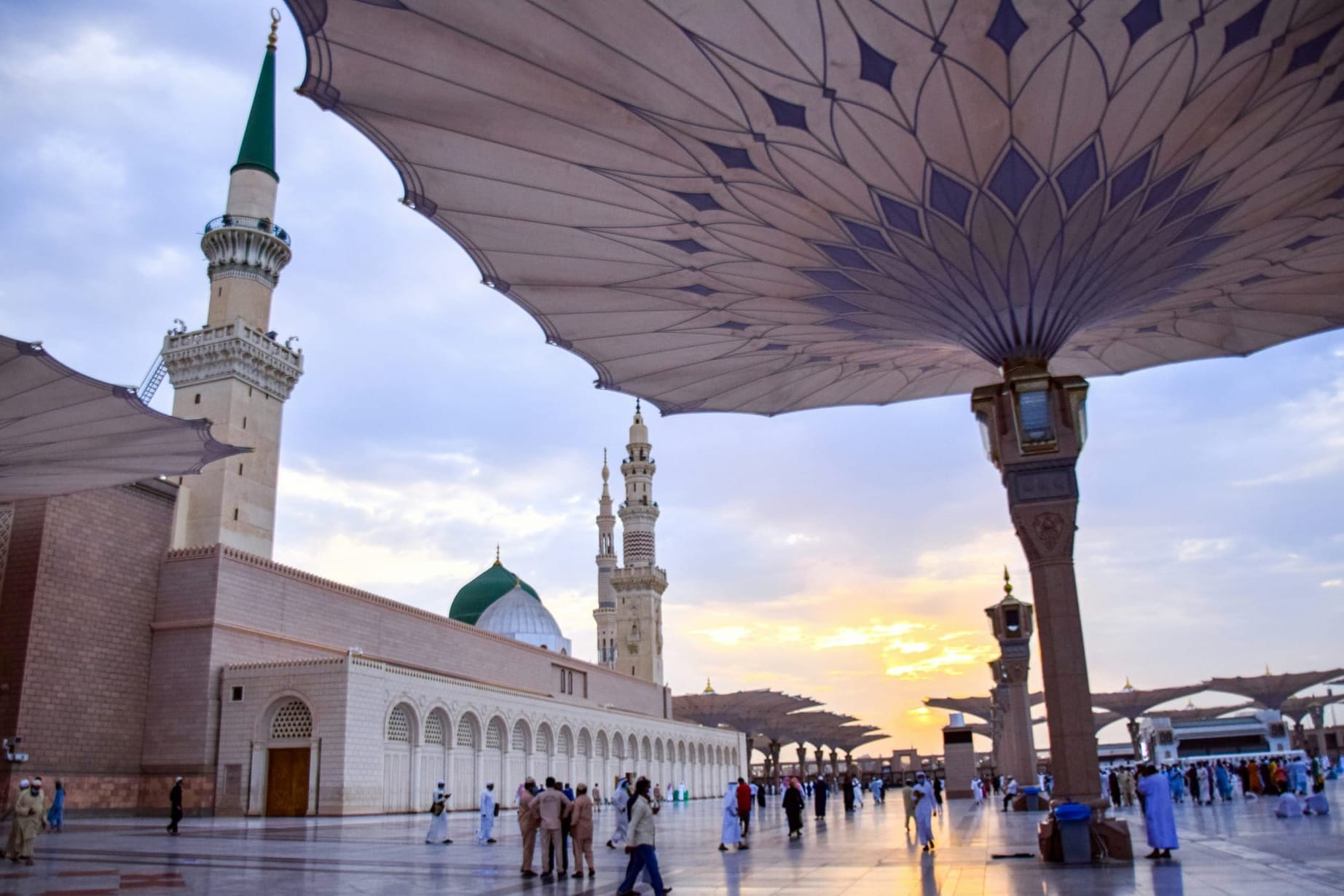
How many umbrellas are in Masjid Nabawi?
There are 250 giant retractable umbrellas installed in the courtyards of Masjid al Nabawi, offering shade and comfort to thousands of worshippers.
What time do the umbrellas in Masjid Nabawi open and close?
The umbrellas open after Fajr prayer and close after Maghrib, automatically adjusting to the day’s weather and sunlight.
Who designed the umbrellas in Masjid Nabawi?
They were designed by German architect Mahmoud Bodo Rasch, renowned for blending innovative engineering with Islamic architectural principles.
The Rawdah: A Garden of Paradise
Within Masjid un Nabawi lies the Riyad ul Jannah (Rawdah), the area between the Prophet's minbar (pulpit) and his tomb. According to a hadith:
"What is between my house and my pulpit is one of the gardens of Paradise."
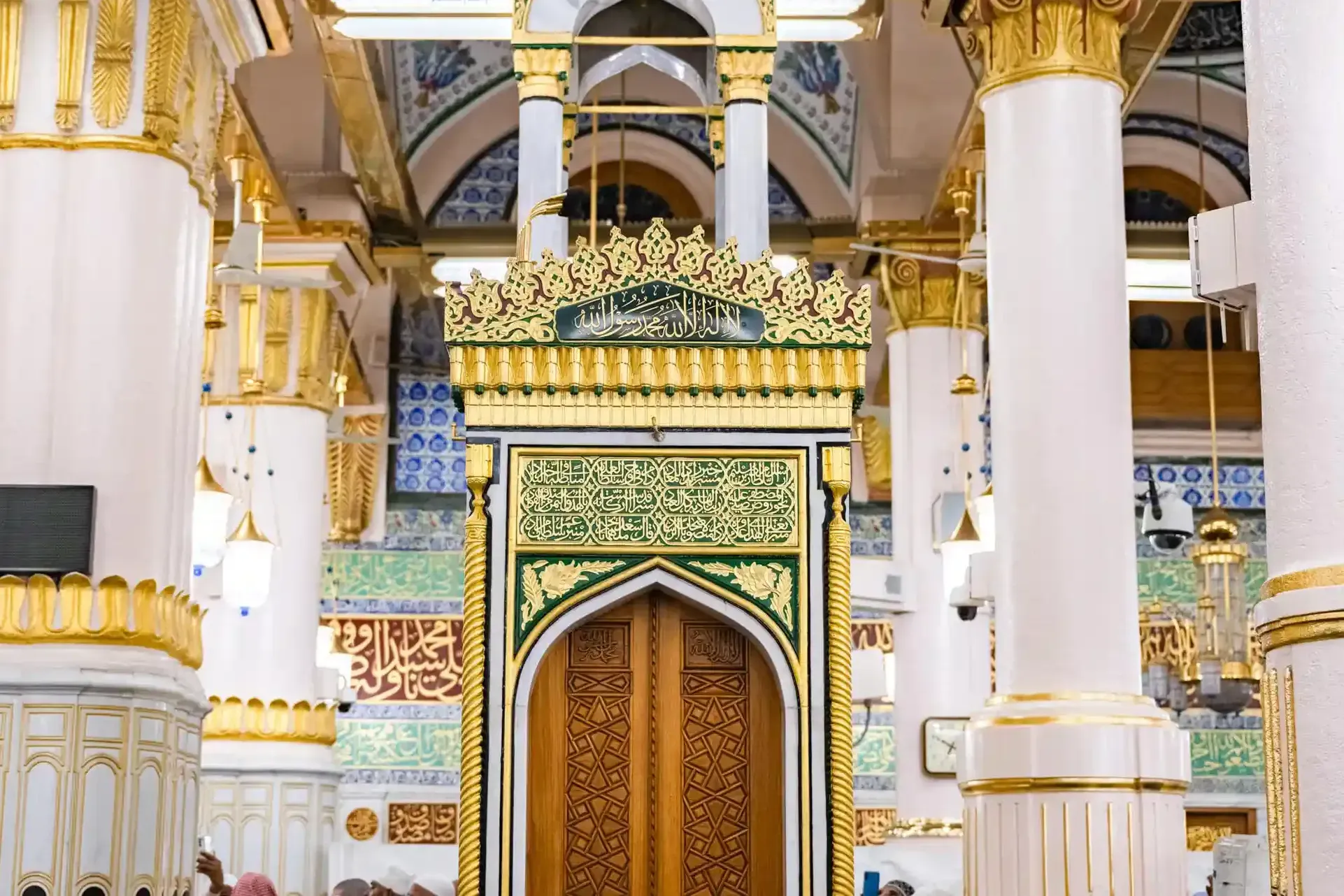
This sacred space is highly sought after for prayer and reflection. Entry is regulated, commonly requiring permits through the Nusuk app due to the high demand.
It is believed that any prayer or supplication made within this space carries exceptional spiritual merit and is more likely to be accepted. Worshippers consider it a once-in-a-lifetime opportunity to pray there.
So Who Built Masjid-e-Nabawi?
The original builder of Masjid al Nabawi is none other than Prophet Muhammad (ﷺ) himself, with the help of his companions. The construction was communal, symbolizing the unity and collaboration of the early Muslim ummah. Over the centuries, it has been rebuilt and expanded by various caliphs, sultans, and kings—from the Rashidun caliphs to modern-day Saudi rulers.
Visiting Masjid-e-Nabawi Today
Exploring the al Nabawi masjid has never been easier thanks to modern infrastructure and services in Madinah. One popular and convenient way to discover the area is the Madinah Hop-On Hop-Off Bus.
- Offers multilingual audio guides
- Stops at all key ziyarat sites in Madinah, including Quba Masjid, Uhud Mountain, and Qiblatain Mosque
- Provides panoramic views and informative insights about each site
The bus route allows visitors to appreciate not only Masjid al Nabawi but also the surrounding spiritual landmarks at their own pace.
Another mention-worthy benefit is how the bus integrates stops at the entrances of Masjid Nabawi near Gate 333, making it a stress-free option for pilgrims, especially during peak seasons.
Final Takeaways
Masjid al Nabawi is more than just an architectural marvel; it's a living testimony to the faith, resilience, and vision of the Islamic world. From its simple beginnings in 622 CE to the sprawling, technologically advanced complex it is today, each layer of its construction reflects a chapter of Islamic history.
Whether you’re standing beneath the Green Dome, praying in the Rawdah, or catching glimpses of the masjid from the top deck of the Madinah Hop-On Hop-Off Bus, the experience is profoundly spiritual and deeply humbling.
May your visit be filled with peace, mercy, and answered prayers.


